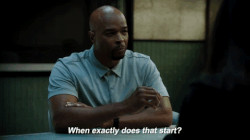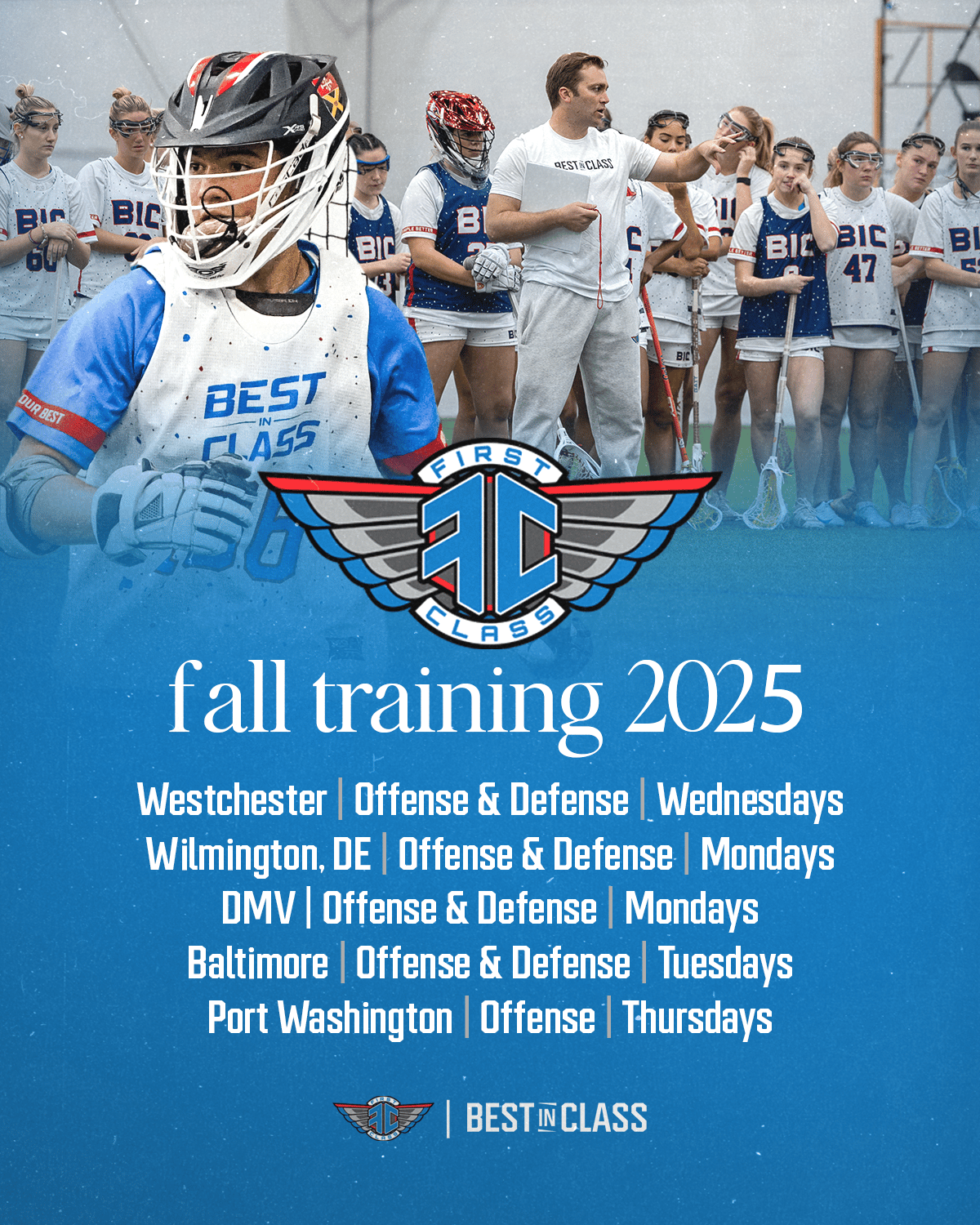
It’s Final Four Friday.
Whether you're heading up to Foxborough or kicking back for a relaxing weekend, this is one of the best times of the year in our sport. The final four is special. There’s really nothing like it. Congrats to every team still competing for a championship, men’s or women’s, across all divisions.
On a different note, today’s Weekly Thought shifts focus to something every family wants to better understand: the recruiting timeline.
We hosted both a men’s and women’s recruiting webinar this week with two great coaches who gave us a behind-the-scenes look at how and when college programs really begin building their boards. Today’s breakdown includes:
Key phases of the recruiting timeline
When coaches actually start recruiting a class
Thoughts on level-setting expectations
Let’s get into it. Happy Friday ☕️,
Matt & Deemer
Forwarded this email? You can subscribe here to stay in the loop 👍.
FCL Recruiting Course

If you’re looking for more resources around the recruiting process, we have built a simple $50 recruiting course to help provide that information.
The course is made up of 51 lessons including videos and text explaining key concepts such as timelines, standing out, NIL, highlight tapes, media, rankings, emails and more. Enroll below and let us know what you think!
THIS WEEKS CONTENT AT A GLANCE
🔥 Webinar Recording - Prepping Your Scout Team, Kacy Kapinos (Delaware)
✍️ Coaches Corner - Defending the Mirror
🏃♂️ On The Run Newsletter - NCAA Lacrosse Weekly Recap
💭 WEEKLY THOUGHT
Understanding the Recruiting Timeline
One of the most common questions families ask us is: “When does the recruiting process really begin?”

The short answer: September 1 of junior year is the first day NCAA Division I coaches are allowed to contact players directly (or July 1st for the academies).
But the real answer is more nuanced—and it varies significantly by division, by program, and by player development timeline.
In our recent webinars with Coach Adam Sear and Coach Sean Kirwan, two seasoned college coaches in men’s and women’s lacrosse, they offered helpful perspective on how the process actually plays out from their experiences. Their insights focused mostly on Division I, but the themes are useful across the board.
So When Do Coaches Actually Start?
Coach Sear put it best: “Fall of sophomore year is when recruiting really starts.”
This is from his direct experience, but this generally aligns with what we hear from other coaches as well, specifically top D1 schools.
Not in terms of direct contact, but in evaluation. College coaches may start forming initial watch lists, especially at major events in the fall. They’re identifying who they want to track into the summer [of their junior year], even if they can't legally reach out yet. This allows them to go into summer with an informed starting point. If they’re a rising sophomore, both Adam and Sean mentioned they might get on an early watch list if seen at a Rising Jr/Rising Soph camp, or a day where no rising junior action is going on.

Adam Sear, FCL Mentor, Former D1 Women’s Coach
Coach Kirwan echoed this and pointed to the IMLCA event in December as a checkpoint he notices a shift in focus: “That’s when a lot of college programs lock in their first wave of juniors. They start organizing boards and targeting players [sophomores] to track.”
But the Timeline Is Not the Same for Everyone
Not every Division I staff recruits on the same schedule. As Coach Kirwan said:
“Some staffs call 40 kids on September 1. Some call one.”

Sean Kirwan, Dartmouth Men’s Head Coach
Many programs, especially those with a more deliberate approach, take their time. And once you move outside of D1, things slow down even more.
Division III recruiting generally begins later. Some D3 coaches don’t fully lock in on a class until senior fall or beyond. For example, NESCAC schools do not offer classes until July going into their senior year due to academic requirements of the school.
Late bloomers—whether due to physical growth, improved play, or injury recovery—absolutely have a shot. Coaches at every level have stories of discovering impact players late in the cycle. Pat Spencer, Pat Kavanagh, CJ Kirst are just a few examples of many of “late bloomers” becoming some of the best players in the sport.
Players still emerge junior and senior year. Don’t assume you're behind if you're not hearing from schools yet. Recruiting is a dynamic process and interest changes.
What a Realistic Timeline Looks Like
Here’s a general framework to help families think about where they stand:
Freshman Year: Focus on development, getting reps, and building good habits.
Sophomore Fall-Winter: Some D1 coaches begin evaluating—not contacting—but you’re on radar at events and through film.
Sophomore Spring: Coaches get into their seasons and recruiting largely halts.
Rising Junior Summer: Coaches really dive deeply into the class. Big evaluations happen here as some prepare to make offers in September.
July 1 (Junior Year): The military academies can start contacting recruits.
September 1 (Junior Year): Contact officially begins for all other D1 schools. Some kids get calls immediately, but many don’t. This is just the start.
Junior Fall–Senior Year: This is when most D2 and D3 programs as well as many D1s round out their classes. If you’re improving and communicating well, there’s plenty of opportunity.
Beyond - Recruiting never really “ends” for schools. Between de-commitments, transfers, re-classes and other changes coaches are always actively working on their classes.
Bottom Line
The recruiting timeline isn’t a fixed track, it’s a dynamic process. Coaches lists are very active and change constantly. They changed based off changing information. Players are always improving and making new impressions. Control your part in this.
Stay focused, stay ready, and remember: coaches are always looking for the right fit, not just the early risers.
Best,
Coach Class and Coach Dunn
🤔 PARENT PERSPECTIVE Q&A
Question
My son is a 2028, what events should he be doing right now? He wants to play college lacrosse and hopes to play D1.
Answer
For a 2028 who wants to play Division I lacrosse, the priority right now should be development, both as a player and as a person. This is still a very early phase in the journey, so the focus should be on improving skills, gaining confidence, and competing in environments that push him to grow. He should be playing club lacrosse, getting reps against good competition, and training consistently throughout the year.
Events
In terms of events, it’s about quality over quantity. A healthy mix might include 2–3 summer club tournaments and 1-2 other events / camps / showcases if he’s ready for that level of exposure. Too many events can lead to burnout or injury, and coaches are not recruiting this age yet.
Strength & Speed Training
This is a pivotal point for HS players develop physically as athletes. Find a trusted strength and/or speed coach in your area to work with regularly. In an ideal world, a player is averaging 3-4 days per week in the gym over the summer. I know some weeks will be impossible with events and tournaments, but this can change you as an athlete and prospect if you get a good system here. If you cannot afford this, see if you can find another coach or mentor to help you out. It is nearly impossible to gain or maintain strength in the spring season, so off-season is where all the gains happen.
Prospect Days
Prospect days at specific colleges can be useful, but only if there's genuine interest from both sides. Right now, those aren’t critical unless it’s a school he's particularly interested in and you guys want to go see the school. They can be a cool way to see a school and interact with a staff, but you shouldn’t feel pressured to do these. Grades and character will also matter as much as talent in the long run, so remind him to stay on top of school and be a great teammate.
Don’t Panic, It’s a Process
Most importantly, remind him this process is a marathon, not a sprint. The truth is there isn’t much this summer that will make or break him. It can help to get in the cycle of some events so that you can train, compete and get on the radar for next summer.
But most importantly, the best players are the ones who keep getting better each year. The road is long ahead. Dive into the process now. If he loves the game and embraces feedback, there will be opportunities ahead… whether D1 or another great fit.
🔥 RECRUITING COVERAGE
In this week’s recruiting section, we are highlighting 3 2026 uncommitted women’s athletes whom just finished or are winding down strong spring seasons. All 3 are battle tested vs tough schedules, have grown in their junior seasons, and great examples for young athletes about resilience, grit, and continuing to improve in this journey.
Meg Langton | 2026 | Defense | St. Anthony’s High School | Yellow Jackets
Langton was the lone uncommitted player making a massive impact on the Friars squad. Once she’s in after draw subs, she played over 90% of possessions and a huge role in the wing of the zone defense. Her ranginess in this position is what is needed at the D1 level. Over 7 of the final 16 NCAA teams this year exclusively played zone and 3 more played mix. Langton’s another great example of a late bloomer making big impact at the #1 school in the country.
Check out her IWLCA profile here.
Caroline Van Raaphorst | 2026 | Defense | Oak Knoll | South Jersey Select
Caroline has emerged as a top 1v1 defender for Oak Knoll, a team loaded with D1 commits. She’s tough, has an incredible work ethic, and has shown noticeable growth in her skills and athleticism. Her spring highlights show the complete package as a defender - and she can fit into a man or zone D.
Check out her IWLCA profile here.
Reed Pinkin | 2026 | Attack | McDonogh| M&D
Reed is coming off a 26 goal, 13 assist season for semifinalist McDonogh. She has a strong inside roll off the dodge and spaces well off the ball for a variety of finishes and cuts. She’s balanced as a feeder as well off the dodge. She has continued upside as her role is only growing at one of the top programs in the nation.
Check out her IWLCA profile here.
🏋 BREAKDOWN OF THE WEEK
HOW PSU HELD NOTRE DAME SCORELESS FOR 20+ MIN
Penn State switched to a zone defense and held the Fighting Irish scoreless for the last 20 minutes of the game last weekend in the NCAA quarterfinals. See how they did it below!
🏋 FCL FALL TRAINING 2025
CHECK OUT OUR DATES AND LOCATIONS
Registration for our Fall Training 2025 is now live! Check out the graphic for more details and hit the link to learn more.

Achieve More With Limited Resources: 15 Small Budget Success Stories
Strategic marketing doesn't require enterprise-level spending. Our latest case studies reveal how 15 small brands achieved remarkable outcomes through creativity and smart resource allocation.
Innovative tactics that delivered exceptional ROI with minimal investment
Strategic approaches that helped small teams compete against industry giants
Data-driven techniques for maximizing impact when resources are limited
Looking for ways to stretch your marketing budget further? These 15 mini case studies show exactly how these small brands made such big waves without breaking the bank.



